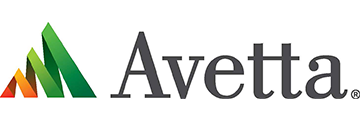Share

Speed networking is different from speed dating.
While both resemble slow-motion games of musical chairs, and both help participants build relationships with strangers, speed networking allows professionals to pursue a much wider range of goals. Those career-oriented objectives could include solving a business problem, advancing into a leadership role, improving a critical skill or even finding a new job. SpeedNetworking.com, a matching software company and industry leader in helping organizations host speed networking sessions, believes the key to a successful event is taking the guesswork out of who’s who in the room.
“We are looking to make the best use of each individual’s time while they are there,” says Sean Gallas, director of operations. “That’s why our program requires all the participants to go through a very short registration process where we collect information on who they are and who they might be hoping to connect with.”
The goal, Gallas says, is to optimize each person’s experience by using an algorithm to sift through attendee profiles and introducing those who could benefit from meeting. When two speed networkers know that they have been matched for a reason, it gives them the confidence they need to present their best selves.
How Does Speed Networking Work?
Each speed networking event is unique. They typically lasts 45 to 90 minutes, and during that time professionals have the opportunity to meet someone new every 5 to 7 minutes. At SpeedNetworking.com sessions, participants receive a schedule of customized matches as soon as they arrive. These schedules include a bit of background information on each person. Once the clock starts ticking, attendees follow their schedules to a series of numbered tables where they sit across from each other and dive into their most pressing questions.
The process taps into the ways many people are used to interacting these days: It allows participants to benefit from experiences that have been tailored to their preferences, and it acknowledges that most folks investigate each new person’s public persona, interests and pet pictures before extending their arm for a handshake. Leaning into these behaviors and expectations helps make speed networking successful, even for those who consider themselves private and reserved.
“At the end of our events, the people who said they were the most nervous often end up being the most socially open,” Gallas says. “They have more confidence knowing that it’ll be a strong connection right away, because the person has expressed interest in their background and vice-versa.”
Can Speed Networking Help Safety Professionals?
One of the most important reasons safety professionals attend industry events is to network with their peers. Occupational safety and health (OSH) is always moving forward, and in addition to being a lot of fun, building relationships with others working in the field can help you stay ahead of the curve. If you have a safety question, chances are many others have encountered the same issue.
Structured networking experiences are particularly useful when paired with safety events that include long periods of classroom learning.
“Our members have said they are interested in having more opportunities to get to know each other,” says Aleese Eckenrode, manager of education and program development at the American Society of Safety Professionals (ASSP). “They might be sitting in a classroom quietly next to someone all day and never meet. Speed networking is a great way for them to take a break and really connect.”
What Are the Best Ways to Prepare for Speed Networking?
SpeedNetworking.com has four quick tips for professionals who want to make the most of their experience:
1. Come prepared.
The best way to prepare is to work on a 30-second elevator pitch that clearly delivers your basic information (name, title, company) and an explanation of what you hope to learn or achieve during your meeting. The rest is simple, Gallas says.
“Bring a pen, paper and a smile. People will gravitate toward you if you’re having a good time.”
2. Be a resource first.
If you want the people you meet to be resources for you, try to be a resource for them. Avoid going into any one-on-one interaction with a “me-first” attitude. Think about all of the stories and information that you have to offer, then focus on putting your expertise in the most helpful terms.
3. Take notes.
You want to remember the people you meet, but you don’t want your notetaking to distract you from listening and making eye contact. It’s a delicate balance, but as with all things, practice makes perfect. If you find yourself focusing too closely on writing the details of your conversation, wait until the meeting is over, then jot down a brief summary.
“Be present and take advantage of the time you have,” Gallas says. “You never know who that person might know or how that person could impact you in a personal or professional manner.”
4. Follow up.
Good manners never go out of style. The most important thing to do after networking is to contact the people you met, thank them for their time and make sure they know how to reach you. Your new contacts will remember the positive encounter you had and appreciate the time you took to reach out. Doing this will also give you an opportunity to ask or answer any questions you missed the first time around.
Back to home page Back to blog home





